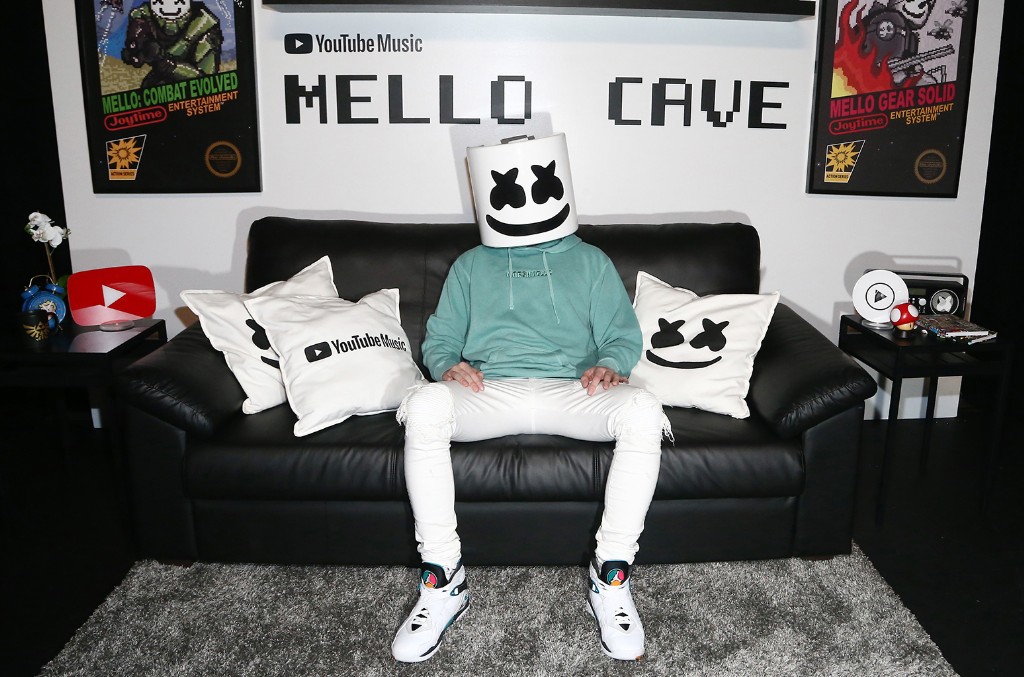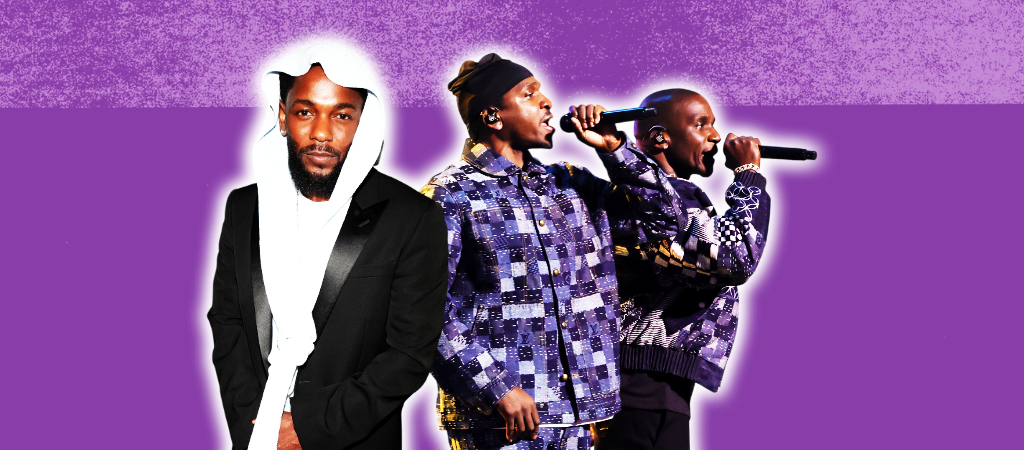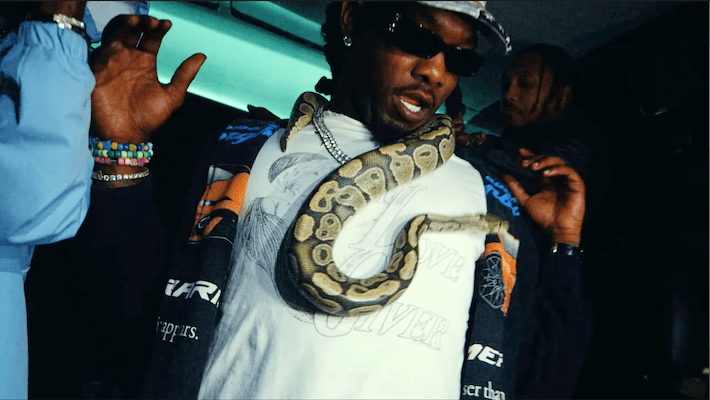Let’s start with a clunky but (arguably) relevant comparison, and say that while marshmallows seem to have only one fairly specific use as a food, the pillowy treats go well with a number of other desserts, and are enjoyed by a wide and diverse segment of humanity.
The same can be said of the EDM producer named for and styled in homage to these fireside snacks. Since emerging in the EDM scene circa 2015, Marshmello has become a dominant brand not only in mainstream dance music, but in a grab bag of genres including hip-hop, rock, pop and country.
Having worked with everyone from Tyga and Chris Brown to Chvrches to Svdden Death and Blackbear to Kane Brown to Bastille, the artist has scored hits on Billboard‘s Hot 100, Country Songs, Rap Songs, Alternative Songs, Rock & Alternative Songs, Dance/Electronic Songs and Dance Electronic Albums charts. Last month, he scored a pair of top ten Hot 100 hits (and his second No. 2 on the chart with “Come and Go,” following his Bastille team-up “Happier” in 2018), thanks to his work on Juice WRLD’s posthumous album, Legends Never Die. His 14 other Hot 100 singles were delivered via collabs with Selena Gomez, Khalid, Logic, Kane Brown and more. (Earlier this week, August 4, Marshmello also teased a forthcoming collaboration with Demi Lovato.)
Certainly many dance producers have found major success in genre crossovers. Diplo is currently riding high into the sunset with his country album, Diplo Presents Thomas Wesley Chapter 1: Snake Oil, at No. 11 on the Country Albums chart — a crossover template first forged by Avicii in 2013 with “Wake Me Up,” and adopted by a bevy of other producers who followed with their own twangy productions.
Meanwhile, Diplo and Skrillex set the template for the modern dance/pop crossover, between Major Lazer’s 2015 monster hit “Lean On” and Jack Ü’s 2015 Justin Bieber vehicle “Where Are Ü Now.” Pushing the electronic realm into top 40 opened the gates for artists like Zedd and The Chainsmokers to increasingly blur genre lines, with their light, soaring and broadly palatable productions serving as the base for star vocalists like Maren Morris, Halsey and Coldplay. (To wit, electronic music’s foray into the mainstream has not been without flack or controversy, with the more underground sectors of the exceptionally diverse global electronic scene having little to do — and often little patience for — with the red carpet-walking stars of EDM.)
But if there’s a difference between the success of these aforementioned artists and Marshmello — whom Diplo called one of the last EDM stars — it’s the diversity and sustainability of his success. The helmeted artist (widely acknowledged to be producer Chris Comstock) currently has three songs in the Hot 100 — “Be Kind” with Halsey at No. 96 and a pair of Juice WRLD tracks at No. 17 and 72 — and is also the only artist to ever score No. 1s on all of Billboard‘s Country Songs (“One Right Thing” with Kane Brown), Dance Songs (“Happier” with Bastille) and Rock and Alternative Songs (“Come & Go” with Juice WRLD) charts.
This adaptability is by design, with the Marshmello brand devised to be all things to all listeners. “I was always fascinated by trying to create a universal character, something that would empower the fans,” Marshmello’s manager Moe Shalizi noted in a 2019 documentary about the artist, “something that allows a fan to make Marshmello theirs.”
Indeed, Marshmello’s adaptability across a wide range of genres is surely connected to his ability to bend to the demands of any given genre. He’s as much of a collaborator as he is a sort of stamp.
“It’s like Coca-Cola,” Shalizi said in Billboard‘s 2018 Marshmello cover story. “When you see red and white, what do you think? We created an unforgettable character; a logo, essentially.”
But a logo wouldn’t work if the music didn’t give it power or relevancy. What collaborators get from working with Marshmello is a track that adopts elements of their respective genres while also bearing the hallmark sounds of an EDM crossover, which makes any given collab appealing to audiences both in and outside of that genre and to Marshmello fans as a whole.
For collaborators, such singles are an opportunity to transcend their respective niches via the Marshmello bump, and for Marshmello himself to gain renown, fans and streams across disparate areas of mainstream music. In July, the producer and Shalizi even announced a new series of animated Marshmello videos for children, a major global demographic for the artist given that he is essentially a non-verbal cartoon character.
Although Marshmello’s most recent studio LP, 2019’s Joytime III, focused largely on sounds and guest features within the electronic realm, it’s been through his singles and collabs that he’s accessed areas of music not largely accessible to many electronic producers. With the EDM moment having largely passed and very few big-name dance producers still visible at the top of the charts in 2020, Marshmello currently has three songs on the 100, while no other dance producer has more than one.
Indeed, just like that bag of Jet Puffed in your box of camping supplies, Marshmello remains a consistent presence.



